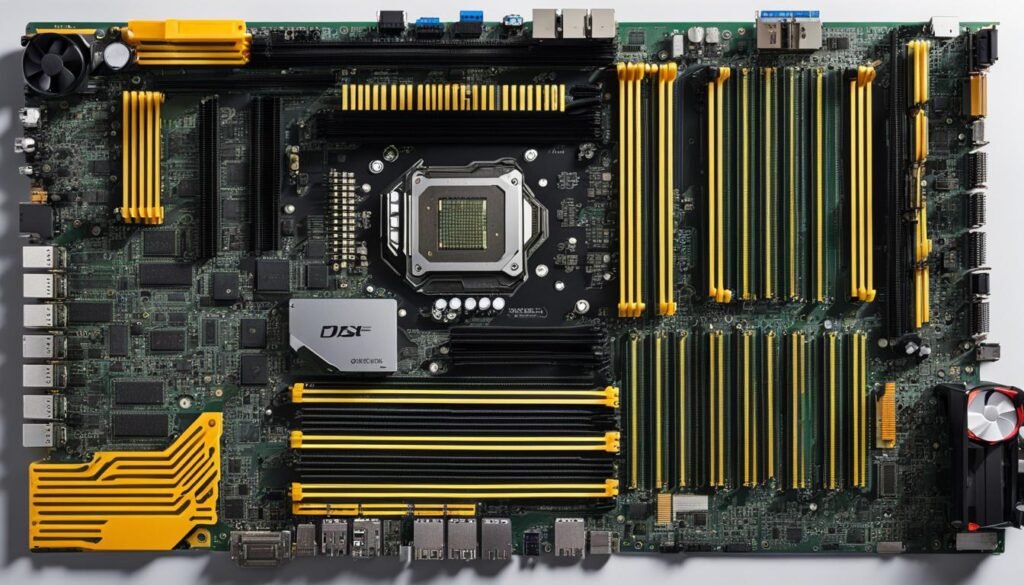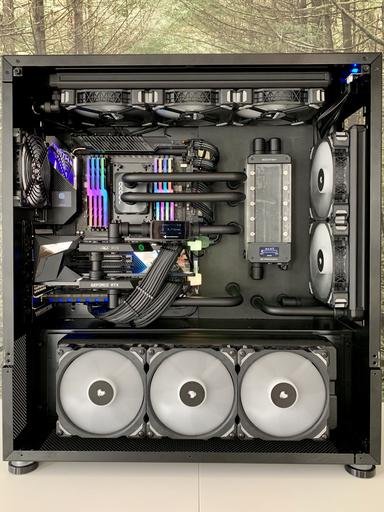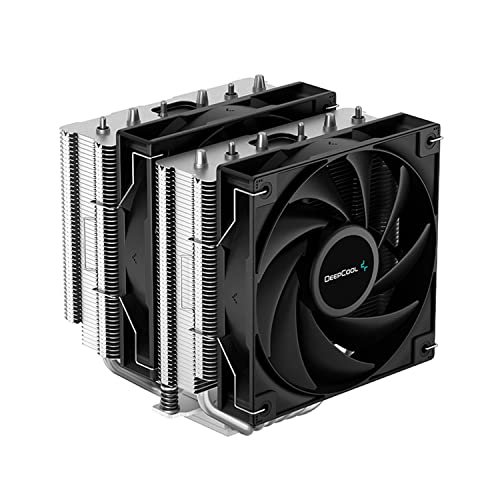
What is a PCPARTPICKER app?
PCPartPicker is a tool that allows you to select and download parts. A website that allows users to compare the prices of computer components and their compatibility. The software can also be used to help users choose components and build their PC.
INVENTED BY:
The PCPartPicker, first developed by Phillip Carmichael and redesigned by him in 2015, like its rivals Pangoly and Logic Increment, is a comparison-shopping website. However, it is not a supplier. This means that it has more options than Newegg’s PC Builder Tool.
How To Get Started:
If you are unsure of what components to use in your build, then there are two good places to begin. The PCPartPicker Team has created build guides that cover different PC builds. From the Buget Office/Home Built. At around $500, to the Glorious Gaming/Streaming Intel Build which will cost you approximately $3,000. How to buid a PC?
Range of build:
The PCPartPicker team has created a range of build guides that cover a wide range of budgets and builds. From a href=”https://pcpartpicker.com/guide/96btt6/budget-HomeOffice-build” title=”(Opens in a new tab)”>Budget Home/Office Build/a> at around $500 to a href=”https://pcpartpicker.com/guide/BV9TwP/guide/BV9Tw.

Use PCPartPicker To Do:
You can use PCPartPicker to do the following:
- Compare prices across retailers to compare prices and compatibility
- Track pricing: Track pricing over time
- Create virtual part lists. Assemble virtual parts lists and receive compatibility advice
- Browse individual components. Navigate to specific types of parts, browse, filter and compare components.
- Explore Build Guides: Browse through build guides for systems that are suitable for different budgets and use cases.
- Share your parts lists easily
Check Out PCPartPicker:
If you’re often replacing hardware or building custom computers, check out PCPartsPicker.com. As the name implies, the site aids in choosing parts, making sure they’re compatible with other hardware, and provides pricing guides so you can make sure you’re getting the best performance for your money. It also provides up-to-date pricing from many online retailers, such as Outlet PC, Amazon, and TigerDirect.
Useful Features of PCPartPicker:
One of the useful features of PCPartPicker is the ability to use the site to pick each part for your build, generating a virtual build on the site. You can find this under ‘System Build’. The webpage will check compatibility and alert you if you’ve chosen incompatible parts. Just browsing the site, you can check lists for all the basic hardware you’ll need, starting with CPU, motherboard, memory, storage, video cards, and then on to power supplies, cases, and other custom parts.

Also read about it. Apple Headphones.
CPU ‘Price vs. Performance Plot’:
For each hardware part, there are useful graphs such as the CPU ‘Price vs. Performance Plot’, which can help you determine what you’re spending and the type of performance you can expect. On the ‘Storage’ tab, you can check value vs. capacity. For power supplies, you can check price vs. wattage. This can save you a lot of time as all the information is right here, rather than having to search all the specifications yourself on different websites.
Ability To Set Price Alerts on Product Categories:
Another useful feature of PCPartPicker is the ability to set price alerts on product categories with customized filters, so you can get the best deal on certain parts you’re watching. Thresholds can be set on specific parts so you can be notified by email when there’s a special deal on a part. You can also check on price trends per category to get a better estimate of which path you might want to take. Price history charts give you a good idea of where the current trend is. The prices are continuously updated, so don’t worry about having to continually check the parts at the retailers’ sites.
Show off Your Builds to Other Users:
One of the features I personally enjoy about PCPartPicker is the ability to show off your builds to other users and see what others have built. A manifest is provided for each build, so you can see exactly what went into the project as well as order the exact same parts yourself. For instance, if someone has built a system for a client or for themselves, and it meets the specifications you need, you’ll know what to expect, and it could save you a lot of time figuring out which parts you need and where the best deal would be, on your own.
Different CPU’s:
Not to be left out is the benchmark section where you can check the performance of the different CPU’s and pricing. If you ever need advice or would like to offer advice regarding builds and customizations, there is a forums section as well with an active community of experts and advisors. It’s a very well-rounded site, and it can save you a lot of time when you need to check on hardware or build your own custom machine for clients.

How Reliable is the PCPartPicker Compatibility Checker?
In a nutshell, PCPartPicker is indeed reliable and accurate most of the time for most hardware configurations. They’ve done a great job and it’s the best hardware compatibility checker out there. But is it pure perfection that checks for every single possible compatibility issue out there? A few things on this Earth come close to perfection besides heaven-sent history-making hits like HL1, GE007, OOT and MGS1. As accurate as PCPartPicker typically is, if you want to be 100% sure you completely avoid any potential compatibility issues whatsoever when planning your custom PC, it’s probably best that you double check things yourself.
As a Beginner:
As a beginner, if you don’t know how to check for compatibility yourself, you should take the time to learn and understand the basics so that you’re never at the mercy of any tool, and to be a more informed builder to avoid problems now and with all your future upgradesLet’s look at the compatibility checks that the PCPartPicker tool might miss, and what to do about it. Not everyone will need to worry about these potential problems, especially if your build is simple, but for some builds these issues may be important.
Plan and publish:
For all the builds we carefully plan and publish here at BGC, we like using PCPartPicker from time to time, but we also always do our own compatibility checks just to be sure because you just never know. Plus, the truth is there are indeed some things the PCPartPicker compatibility checker cannot possibly account for (at least not for now), so it might not just be a good idea to do your own checks but a necessity to avoid all potential issues.
Does PCPartPicker Check if Parts Fit in the Case?

Space and Size Issues:
You may wonder if PCPartPicker accurately considers all size/space issues for a parts list. In other words, whether ALL your parts fit in the case you’ve selected as well as whether certain component combinations will fit together without encountering space restrictions (e.g. checking if large CPU coolers or GPUs would obstruct other pieces of your build such as RAM modules or add-on PCIe cards, etc.).
The following warning message you might already have seen when using their tool pretty much sums it up:
“Some physical dimension restrictions cannot (yet) be automatically checked, such as CPU cooler / RAM clearance with modules using tall heat spreaders” Pretty self-explanatory, but you may wonder what they mean exactly when they say the tool cannot check everything
What does and doesn’t it check?
The followng things matter to check in the pcpartpicker:
size and space issues, and the tool pulls data
PCPartPicker will check most size and space issues, and the tool pulls data such as GPU lengths and CPU cooler heights from the official manufacturer specs. So, you could be okay relying on the tool Soley, especially for simpler builds without too much going on (i.e. custom modifications).
CPU coolers and RAM
But there are some things it just cannot possibly check, such as their example of CPU coolers and RAM with large heat spreaders (which most builders shouldn’t have to worry about as most RAM modules don’t have tall heat spreaders).
RAM:
If you want to be extra safe, you should always do your own compatibility checks, especially if you’re using a small case, a bulky air cooler (double check the compatibility between your chosen cooler, case and RAM), a large GPU (or SLI/Crossfire), a rarer more obscure brand of case/component, or you’re throwing in add-on parts like PCIe cards that could potentially get in the way of other parts like thicker GPUs. It’s also not going to check parts for a custom water-cooling build.

Micro ATX motherboard:
As a common real-world example of how relying solely on the PCPartPicker checker could lead to space restriction issues, let’s say you have said a micro ATX motherboard with a thick graphics card, and you want to include a PCIe expansion card in your setup such as a PCIe wireless network card. You might not have enough space on a compact motherboard like that and the cards might interfere with each other (space-wise), and you’d have to make do using an external USB wireless network adapter instead.
Uses the specs:
One last thing to keep in mind on checking space for your parts: since PCPartPicker uses the specs provided by manufacturers in their checks, this is going to be accurate 99% of the time, but there’s always the chance the manufacturer’s listing makes an error and/or provides inaccurate information for a certain model. Those official specs could also assume something about your configuration, so if you’re cutting it close with a certain measurement you should do your research to ensure you don’t run into issues. Helpful Redditor user sverebom from this thread put this better than I could.
GPU clearance:
“Problems can occur when manufacturer specifications are not accurate or depend on specific situations. For example, GPU clearance might depend on front intake configuration. Some case manufacturers for example measure GPU clearance assuming a front mounted radiator (and if you follow that measurement, you might find out that you wasted a lot of space or that you could have bought a larger video card in an air-cooled setup). You also must keep in mind that GPUs need some extra space around them for circulation and for the cables. These are not covered by PCPartPicker.

Does PCPartPicker Check Memory Compatibility with the Motherboard?
Yes. PCPartPicker checks basic compatibility between your motherboard and RAM, such as the type of RAM and whether the RAM modules will fit.But it doesn’t check the QVL. This is quite unlikely to cause compatibility issues for most consumer PC builds, but it is indeed a possibility if you get unlucky. Read on if you’re curious to know more.
Also read about:
Ram modules:
While PCPartPicker will confirm if your RAM modules fit your motherboard, it does not check whether those modules have been tested to work on that motherboard. To be more specific, it does not check if your memory modules are listed on what’s called the QVL (Qualified Vendors List) of your motherboard. This is not PCPartPicker’s fault, as implementing such a feature in their tool hurts my brain to just think about (let alone execute). Officially tested and approved memory modules for any given motherboard are listed on the QVL, which you can find on a motherboard manufacturer’s site, but does this even matter?
Should you manually check that your chosen RAM modules are listed on the QVL?
See Is the Memory QVL Important for a full explanation, but in a nutshell, for most gaming PC builds it’s not necessary to do this, as many RAM modules that aren’t on the QVL will still work just fine. So 9 times out of 10 you will be just fine if you just check that your memory type/size/speed is supported by your motherboard (which PCPartPicker does for you), and there’s no need to restrict the RAM you select for a PC build to only those on the QVL.
Checking the QVL:
However, checking the QVL is generally not important – until it is. While rare, there is always the chance that you get unlucky with a certain combination of RAM and motherboard and encounter issues by not sticking to the QVL. It’s a bit of a grey area, with different opinions on the matter, but based on my own perspective, the consensus among most builders is that it’s not necessary for gamers to worry about the QVL unless you’re building a server-type PC etc.
Problems occur:
But problems can occur, and if you want to be extra careful, you may want to consider sticking to officially listed RAM for any given motherboard. As a (rare) example, here’s Redditor stardestroyer001 who got unlucky: “Pcpartpicker told me that the RAM I selected was compatible, where the mobo compatibility sheet didn’t list it as compatible. Kept having bluescreens and corrupted ram every 3 months, it was very aggravating and expensive. ”
How Accurate is the PCPartPicker Estimated Wattage?
Accurate enough, but it’s only a general estimation of the power your system will use, and so you should think through the power needs of your system yourself. The same thing goes for any power calculator. For example, a power requirement calculator like PCPartPicker’s may tell you that your parts list will only use up to 450 watts, but let’s say you have a GPU that has an officially listed minimum PSU requirement of 550 watts by the manufacturer.

Does PCPartPicker include Every component out there?
Most, but not all. For example, sometimes a brand-new release won’t be included in their database. Plus, the tool does not include custom water-cooling parts such as EKWB pumps, radiators, water blocks, etc. (popular when building a water-cooling PC) or other lesser-known niche products for more complex or custom systems. This is totally understandable; can you imagine the complexity of including such calculations in a software tool? I used to be an avid programmer in my teens, but my brain hurts just thinking about it.
Fellow Redditor Demonstar55 from this thread also found this to be true:
“Always double-check compatibility. They don’t always have items listed. Sometimes SKUs change and URLs change, and they rely on volunteers to keep stuff updated in these cases. I think you must make a forum post to get this stuff fixed, which I’ve been too lazy to do when I’ve found stuff that needs updating.
Final Thoughts on PCPartPicker (& How They Make Money)
I’ll get to how PCPartPicker makes money if it wasn’t already obvious to you, as people have asked this before due to it being a 100% free service, but first let’s summarise using PCPartPicker for planning a new build:
The Lowdown:
This is a great tool you can trust for checking compatibility issues. While it’s not perfect, there’s no more reliable and accurate software tool out there right now for checking hardware compatibility. But ask any other experienced PC builder, and they’ll tell you the same thing: do not rely solely on any one tool or resource, and make your own judgement and do your own checks if you’re unsure about anything.
A True PC Master Race Mogul
They’ve (or he, the founder) created a great time-saving tool that should be a part of any PC enthusiast’s digital arsenal when planning a build, and I have great respect for what they’ve achieved. To currently (as of 2019) be in the top 2000 most visited websites in the world as a software tool for a kind of niche subject like PC building is just one example of how successful their site has become, and I’m happy they’re very likely making an absolute killing in affiliate commissions (which is, if you’re wondering, how PCPartPicker makes money).
purchase a product:
Whenever you purchase a product through one of their links, they earn a small cut at no extra cost to you. This is also how we can be compensated for the work we do on this very site (though obviously at a minuscule scale compared to such a hugely popular site like PCPartPicker). When an individual or company makes a lot of money, the truth is that most of the time (excluding the odd bad apple who profited unethically, which is rarer than most people cynically think), this success is well deserved and simply a reflection of how much value they have brought other people.

Creator:
The creator also seems like a genuine, credible guy, not just because of the invaluable tool he managed to pull off in a big way, but based on what I’ve seen over the years, such as seeing them actually listen to feedback and criticism and improve what they do however they can, the many helpful posts in places like the BuildAPC subreddit community responding 1 on 1 to direct questions and people’s concerns with the tool, the charity work his company has done and is doing (see their blog), among other things. I feel good sharing and supporting their tool.


